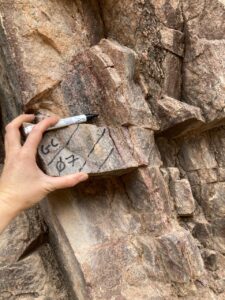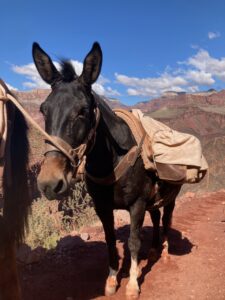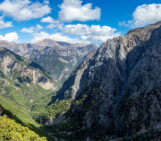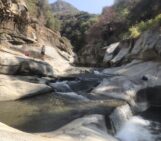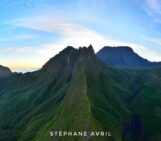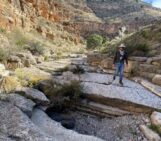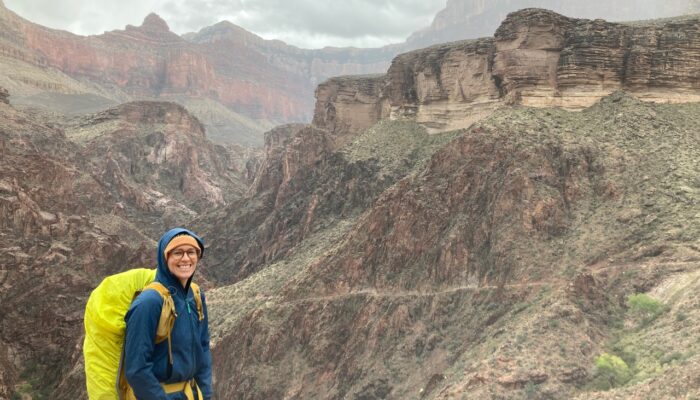
This blog post is part of our series: “Highlights” for which we’re accepting contributions! Please contact Emma Lodes (GM blog editor, elodes@asu.edu), if you’d like to contribute on this topic or others.
Interview with Audrey Margirier, Postdoctoral fellow, University Grenoble Alpes & University of Lausanne (Switzerland). Email: audrey.margirier@unil.ch
Questions by Emma Lodes.
This week, we dive into an exciting new method in geomorphology and thermochronology: Electron Spin Resonance, or ESR. ESR promises to fill a gap in time: methods currently used to track past erosion and uplift rates (i.e., cosmogenic radionuclide analysis, luminescence and low-temperature thermochronology) generally don’t cover the time period between ~100,000 to ~1 million years ago, due to inherent limitations of the geochemical systems. This results in a period in Earth’s history for which we know very little about mountain building. However, ESR works on timescales that can fill the gap. Audrey Margirier is part of one of the first groups to dive into making ESR a reliable method, and here she tells us about her experiences and current work!
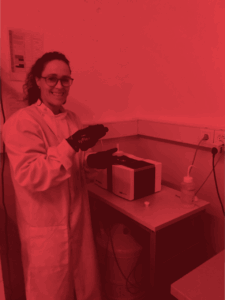
ESR measurements in the laboratory at the University of Lausanne. Audrey is holding a sample that was just measured. PC: Kathy Zimmerman.
Can you describe in simple terms how ESR works?
ESR relies on the fact that environmental radiation such as natural radioactivity and cosmic rays interact with the crystal’s lattice and knock electrons out of their normal positions. Some of these electrons become trapped in defects or vacancies within the crystal. Because they are unpaired, these trapped electrons act like tiny magnets. In the lab, we apply a magnetic field and expose the sample to microwaves. When the energy of the microwaves matches the energy difference between the trapped electrons’ spin states, the electrons absorb energy. By measuring this absorption, we can determine how many electrons have been trapped, which allows us to infer how long the sample has been exposed to radiation.
Q: What type of scientific questions can ESR help us answer?
ESR dating allows us to address questions about the timing and rates of Earth surface processes. Since ESR signals are reset by light or heat and accumulate with exposure to natural radiation, the method is widely applied for dating in geomorphology research. It helps to constrain the timing of climate and tectonic-driven events such as sea-level changes and sediment dynamics during the Quaternary. ESR dating has also been widely used to date the occupation of archaeological sites and artifacts, and understand human dispersal and evolution. Beyond chronology, ESR is also useful for provenance analysis and as a low-temperature thermochronometer capable of resolving low magnitude exhumation and recent landscape evolution. As these latter applications are being revisited and developed right now, I think a new range of applications will emerge in the next years.
How did you get involved in using this method?
During my PhD and postdocs, I worked on how deep-seated processes and climate controlled the Earth’s surface evolution over million-year timescales, mainly using thermochronology and numerical modelling. Then, because I wanted to better understand erosion and sediment transport dynamics, I began working at finer spatial scales and on shorter timescales.
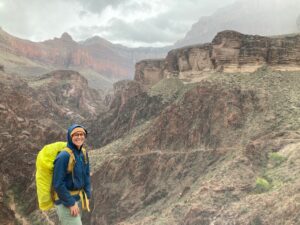
Me happy to see the Great Unconformity while hiking down under some rain in the Grand Canyon. PC: Gilby Jepson.
I became interested in ESR because it offers a way to bridge the gap between the long-term record from classical thermochronometers, such as apatite fission track or (U-Th)/He, and shorter-term records obtained from geomorphological analysis, cosmogenic nuclides, and luminescence dating. I was aware that teams in Lausanne and Hannover were developing ESR thermochronology capable of resolving cooling rates during the Quaternary, with a lower temperature sensitivity than the apatite (U-Th)/He thermochronometer. This motivated me to write a Marie Skłodowska-Curie Actions (MSCA) postdoc proposal to secure funding to work with this method at the University of Lausanne.
Can you tell us briefly about a current / recent project in which you’re using ESR?
During my postdoc at the University of Arizona, I developed a side project aiming to quantify the incision history of Zion Canyon in the Colorado Plateau using classical thermochronology. In this area, the high geothermal gradient allows classical thermochronometers to capture the onset of exhumation. However, in many other canyons, the onset of incision remains debated because traditional thermochronometers are not sensitive enough to record the evolution of 1–1.5 km deep canyons. My current MSCA postdoc project uses ESR thermochronology to resolve the incision history of several major canyons across the Colorado Plateau and will provide a clearer picture of the processes controlling plateau incision in this region.
What are some benefits of this method over others? And what are some frustrating aspects about ESR?
ESR has several advantages. Quartz is abundant, which makes it relatively easy to find suitable samples. Compared with other trapped-charge dating techniques, ESR saturates later, meaning it can be used to date landforms that are older than luminescence can reach. The same applies in thermochronological applications: although ESR signals do eventually saturate, ESR can still be applied in regions with moderate Quaternary exhumation rates, where other trapped-charge thermochronometers have already reached saturation.
An exciting and challenging feature of ESR thermochronometer is that individual samples can display different temperature sensitivities. We don’t yet fully understand what controls this variability, but it may ultimately allow us to better reconstruct complex thermal histories. On the challenging side, ESR requires a lot of hands-on work. Nothing is automated, and each sample must be tested individually to determine its temperature sensitivity. It’s time-consuming, but also very rewarding because there is still a lot to refine and better understand about this thermochronometer.
Do you have any noteworthy stories (good or bad) of doing the field work required for ESR?
I did two field seasons in 2024 to collect samples for ESR dating. I’ve always loved fieldwork, but the western US is especially amazing for its outcrops, landscapes and the abundance of sandstone. Finding quartz-rich rocks there is easy, but one challenge was collecting large enough chunks, because in the lab I have to cut away all parts exposed to sunlight, even during sampling. Carrying the samples out of the canyons was definitely the bigger challenge, but it turned into great adventures. In most canyons, I had a big team, and sampling was a mix of fun, teamwork, and heavy backpacks to carry back up to the rim of the canyons. The Grand Canyon was a different story: there were only two of us navigating trails with heavy samples. We managed to get almost all the samples out thanks to a mule duffel bag service. Such a luxury!

